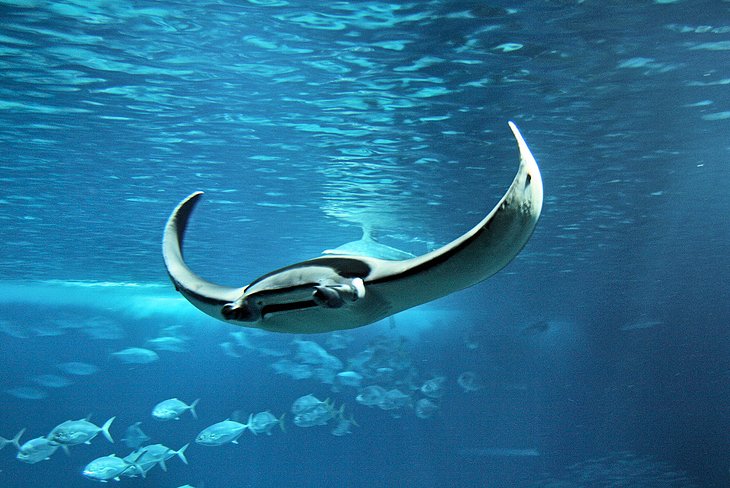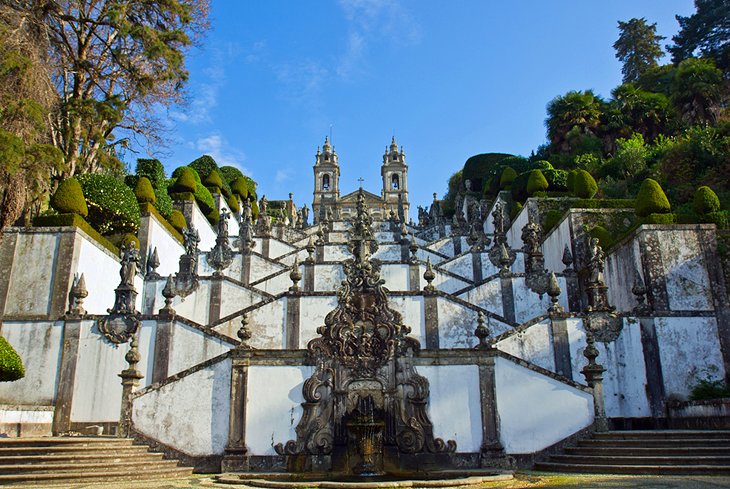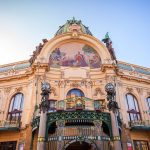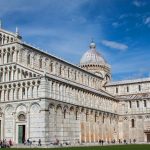Portugal is a southern European country on the Iberian Peninsula, bordering Spain. Its location on the Atlantic Ocean has influenced many aspects of its culture: salt cod and grilled sardines are national dishes, the Algarve’s beaches are a major destination and much of the nation’s architecture dates to the 1500s–1800s, when Portugal had a powerful maritime empire.
Portugal is the oldest continuously existing nation state on the Iberian Peninsula and one of the oldest in Europe, its territory having been continuously settled, invaded and fought over since prehistoric times. It was inhabited by pre-Celtic and Celtic peoples, visited by Phoenicians, Carthaginians and Ancient Greek traders, and was ruled by the Romans, who were followed by the invasions of the Suebi and Visigothic Germanic peoples. After the invasion of the Iberian Peninsula by the Moors, most of its territory was part of Al-Andalus. Portugal as a country was established during the early Christian Reconquista.
Portugal has left a profound cultural, architectural and linguistic influence across the globe, with a legacy of around 250 million Portuguese speakers around the world. It is a developed country with an advanced economy and high living standards.Additionally, it ranks highly in peacefulness, democracy, press freedom, stability, social progress, prosperity and English proficiency. A member of the United Nations, the European Union, the Schengen Area and the Council of Europe (CoE), Portugal was also one of the founding members of NATO, the eurozone, the OECD, and the Community of Portuguese Language Countries.
1. Mosteiro dos Jerónimos

The Jerónimos Monastery or Hieronymites Monastery is a former monastery of the Order of Saint Jerome near the Tagus river in the parish of Belém, in the Lisbon Municipality, Portugal; it was secularised .
The Jerónimos Monastery replaced the church formerly existing in the same place, which was dedicated to Santa Maria de Belém and where the monks of the military-religious Order of Christ provided assistance to seafarers in transit. The harbour of Praia do Restelo was an advantageous spot for mariners, with a safe anchorage and protection from the winds, sought after by ships entering the mouth of the Tagus. The existing structure was inaugurated on the orders of Manuel I (1469–1521) at the courts of Montemor o Velho in 1495, as a final resting-place for members of the House of Aviz, in his belief that an Iberian dynastic kingdom would rule after his death. In 1496, King Manuel petitioned the Holy See for permission to construct a monastery at the site.The Hermitage of Restelo (Ermida do Restelo), as the church was known, was already in disrepair when Vasco da Gama and his men spent the night in prayer there before departing on their expedition to India in 1497.
One such mariner, Vasco da Gama, discovered the sea route to India in 1498 and to honor his achievement, King Manuel I commissioned a monument that became a lasting symbol of the country’s astonishing era of conquest and expansion. Today, the Mosteiro dos Jerónimos is one of the country’s most cherished and revered buildings, and is a must-see on every tourist’s agenda.
The church and monastery embody the spirit of the age, and feature some of the finest examples of Manueline architecture found anywhere in Portugal; the beautifully embellished decoration found on the South Portal is breathtaking.
Inside, the beautiful cloister is equally exuberant. Appropriately, the church houses the tomb of Vasco da Gama and other national figureheads, including Luís de Camões, Portugal’s greatest poet and chronicler of the discoveries.
2.Oceanário de Lisboa

The Lisbon Oceanarium is an oceanarium in Lisbon, Portugal. It is located in the Parque das Nações, which was the exhibition grounds for the Expo ’98. It is the largest indoor aquarium in Europe.
The Lisbon Oceanarium’s conceptual design, architecture, and exhibit design was led by Peter Chermayeff of Peter Chermayeff LLC while at Cambridge Seven Associates. It is said to resemble an aircraft carrier, and is built on a pier in an artificial lagoon. Chermayeff is also the designer of the Osaka Oceanarium Kaiyukan, one of the world’s largest aquariums, and many other aquariums around the world.
The Lisbon Oceanarium has a large collection of marine species — penguins, seagulls and other birds; sea otters (mammals); sharks, rays, chimaeras, seahorses and other bony fish; crustaceans; starfish, sea urchins and other echinoderms; sea anemones, corals and other cnidaria; octopuses, cuttlefish, sea snails and other mollusks; amphibians; jellyfish; marine plants and terrestrial plants and other marine organisms totaling about 16,000 individuals of 450 species.
The main exhibit is a 1,000 m2 (11,000 sq ft), 5,000,000 l (1,300,000 US gal) tank with four large 49 m2 (530 sq ft) acrylic windows on its sides, and smaller focus windows strategically located around it to make sure it is a constant component throughout the exhibit space. It is 7 m (23 ft) deep, which allows pelagic swimmers to swim above the bottom dwellers, and provides the illusion of the open ocean. About 100 species from around the world are kept in this tank, including sharks, rays, barracudas, groupers, and moray eels. One of the main attractions is a large sunfish.
Ocean sunfish
Four tanks around the large central tank house four different habitats with their native flora and fauna: the North Atlantic rocky coast, the Antarctic coastal line, the Temperate Pacific kelp forests, and the Tropical Indian coral reefs. These tanks are separated from the central tank only by large sheets of acrylic to provide the illusion of a single large tank. Throughout the first floor there are an additional 25 thematic aquariums with each of the habitats’ own characteristics.
The Lisbon Oceanarium is one of the few aquariums in the world to house a sunfish, because of their unique and demanding requirements for care. Other species include two large spider crabs and two sea otters named Eusébio after the soccer player and Amália, named after the fado singer Amália Rodrigues. After both otters died (Eusébio in 2020 and Amália in 2013), two new otters (named Micas and Maré), their daughters, which had been loaned to the Rotterdam zoo were brought back.
3.Palácio Nacional de Sintra

The Palace of Sintra, also called Town Palace, is located in the town of Sintra, in the Lisbon District of Portugal. It is a present-day historic house museum.
It was one of two castles at what is now Sintra in the Moorish Al-Andalus era that began with the Umayyad conquest of Hispania in the 8th century. The other, now known as the Castelo dos Mouros (Castle of the Moors), located atop a high hill overlooking modern Sintra, is now a romantic ruin.
The castle now known as Sintra National Palace, located downhill from the Castelo dos Mouros, was the residence of the Islamic Moorish Taifa of Lisbon rulers of the region. The earliest mention in a source is by Arab geographer Al-Bacr. In the 12th century the village was conquered by King Afonso Henriques, who took the ‘Sintra Palace’ castle for his use. The blend of Gothic, Manueline, Moorish, and Mudéjar styles in the present palace is, however, mainly the result of building campaigns in the 15th and early 16th centuries.
Nothing built during Moorish rule or during the reign of the first Portuguese kings survives. The earliest surviving part of the palace is the Royal Chapel, possibly built during the reign of King Dinis I in the early 14th century. The palace chapel has a tiled floor with tiles in the apse laid to resemble a carpet. The walls are painted in patterned squares that look like tiles and depict the Holy Ghost descending in the form of a dove. The wooden ceiling is decorated in geometrically patterned Moorish latticework.
4.Kayaking the Lisbon Coast

aking to the sea by kayak to explore the Lisbon coast makes for a rewarding maritime excursion. Besides offering an extra dimension to the sightseeing experience, paddling the coastline provides an excellent excuse to exercise in a salt-laced, pristine environment.
Indeed, Lisbon’s proximity to the ocean allows for a wide range of exciting water sports, and discovering the beaches, bays, and coves set along the region between the Portuguese capital and the resort town of Cascais is a fun-packed way to enjoy a day out.
Beyond the area, the crystal-clear waters off the Serra da Arrábida Natural Park, which encompass places like Setubal and Sesimbra, comprise a unique landscape of magnificent, ancient sea cliffs that teem with birdlife.
Most of the coastline here lies within a protected marine reserve – a sanctuary that includes within its boundaries the wonderfully picturesque Ribeira do Cavalo beach.
5.Bom Jesus do Monte

The Sanctuary of Bom Jesus do Monte is a Portuguese Catholic shrine in Tenões, outside the city of Braga, in northern Portugal. Its name means Good Jesus of the Mount. This sanctuary is a notable example of Christian pilgrimage site with a monumental, Baroque stairway that climbs 116 meters.
Many hilltops in Portugal and other parts of Europe have been sites of religious devotion since antiquity, and it is possible that the Bom Jesus hill was one of these. However, the first indication of a chapel over the hill dates from 1373. This chapel – dedicated to the Holy Cross – was rebuilt in the 15th and 16th centuries. In 1629 a pilgrimage church was built dedicated to the Bom Jesus (Good Jesus), with six chapels dedicated to the Passion of Christ.
The present Sanctuary started being built in 1722, under the patronage of the Archbishop of Braga, Rodrigo de Moura Telles. His coat of arms is seen over the gateway, in the beginning of the stairway. Under his direction the first stairway row, with chapels dedicated to the Via Crucis, were completed. Each chapel is decorated with terra cotta sculptures depicting the Passion of Christ. He also sponsored the next segment of stairways, which has a zigzag shape and is dedicated to the Five Senses. Each sense (Sight, Smell, Hearing, Touch, Taste) is represented by a different fountain. At the end of this stairway, a Baroque church was built around 1725 by architect Manuel Pinto Vilalobos.
n the 19th century, the area around the church and stairway was expropriated and turned into a park. In 1882, to facilitate the access to the Sanctuary, the water balance Bom Jesus funicular was built linking the city of Braga to the hill. This was the first funicular to be built in the Iberian Peninsula and is still in use.
The Sanctuary has been classified as Property of Public Interest since 1970
6.Universidade de Coimbra

Coimbra, a riverfront city in central Portugal and the country’s former capital, is home to a preserved medieval old town and the historic University of Coimbra. Built on the grounds of a former palace, the university is famed for its baroque library, the Biblioteca Joanina, and its 18th-century bell tower. In the city’s old town lies the 12th-century Romanesque cathedral Sé Velha.
The contemporary university is organized into eight faculties, granting bachelor’s (licenciado), master’s (mestre) and doctorate (doutor) degrees in nearly all major fields. It lends its name to the Coimbra Group of European research universities founded in 1985, of which it was a founding member. Enrolling over 20,000 students, more than 15% of whom are international, it is one of Portugal’s most cosmopolitan universities.
Coimbra’s alumni over the centuries include Portugal’s national poet Luís de Camões, the mathematician Pedro Nunes, many statesmen, prime ministers and presidents of Portugal, and Nobel Prize laureate António Egaz Moniz.
The university was founded, or ratified, in 1290 by King Dinis, having begun its existence in Lisbon with the name Studium Generale (Estudo Geral). Scientiae thesaurus mirabilis, the royal charter announcing the institution of the university was dated 1 March of that year, although efforts had been made at least since 1288 to create this first University in Portugal; it is thus the second oldest of such establishments in the Iberian Peninsula. The Papal confirmation was also given in 1290 (on 9 August of that year), during the Papacy of the Pope Nicholas IV. In accordance with the Papal Bull, all the “licit” Faculties, with the exception of that of Theology, could be established. Thus the Faculties of Arts, Law, Canon Law and Medicine were the first to be created. It was, however, not to remain in Lisbon for long. In 1308, likely due to problems of emancipation from the Church (relations between the latter and the political power being somewhat strained at the time) and conflicts between the inhabitants of the city and the students, the university moved to Coimbra. This town already had old traditions in education, being home to the highly successful school of the Monastery of Santa Cruz. The university was then established on the site known as “Estudos Velhos”, which corresponds roughly to the area where the Main Library now stands.
7.Museu Calouste Gulbenkian

The Calouste Gulbenkian Museum houses one of the world’s most important private art collections. It includes works from Ancient Egypt to the early 20th century, spanning the arts of the Islamic World, China and Japan, as well as the French decorative arts, Impressionist painting and the jewelry of René Lalique.
Lisbon is blessed with some truly world-class museums, and one of the finest is the Museu Calouste Gulbenkian. The museum’s collection numbers some 6,000 pieces, all of which belonged to just one man: Calouste Sarkis Gulbenkian, a wealthy Armenian oil magnate who bequeathed his priceless hoard to the Portuguese nation upon his death in 1955.
The permanent exhibition and galleries are distributed chronologically and in geographical order to create two independent circuits within the overall tour.
The first circuit highlights Greco-Roman art from classical antiquity, as well as art from the ancient Near East and the Nile Valley. Among the artworks are ancient Egyptian, Mesopotamian, Persian, and Armenian pieces, as well as Persian art from the Islamic period.
The second circuit includes European art, with sections dedicated to the art of the book, sculpture, painting and the decorative arts, particularly 18th century French art and the work of René Lalique. In this circuit, a wide-ranging number of pieces reflect various European artistic trends from the beginning of the 11th century to the mid-20th century. The section begins with works in ivory and illuminated manuscript books, followed by a selection of 15th, 16th and 17th century sculptures and paintings. Renaissance art produced in the Netherlands, Flanders, France and Italy is on display in the next room.
French 18th century decorative art has a special place in the museum, with outstanding gold and silver objects and furniture, as well as paintings and sculptures. This section is followed by galleries exhibiting a large group of paintings by the Venetian Francesco Guardi, 18th and 19th century English paintings, and finally a superb collection of jewels and glass by René Lalique, displayed in its own room.









